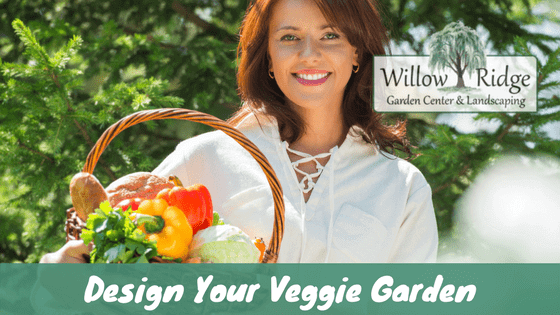Design Your Veggie Garden
It’s still Winter in East Tennessee, but we’re dreaming of our own homegrown tomatoes. Now is the time to design your veggie garden. Decide what vegetables you want and how much each plant will yield. The amount of space and time you have will dictate what you should plant. The garden location and soil will be a major factor in how much food this garden will produce.
Locate your garden in the “full sun”, 6-8 hours of sunlight a day. The soil should be cleared of all existing plant material and healthy amounts of organic matter (compost/manure) added to the entire area. Do this now (Jan.) and work it into the soil when you begin planting this Spring. Amend the soil at least twice a year.
Deciding how many plants to put out depends on how many people you are feeding! Plant 1-4 Tomatoes, 2-3 Pepper plants, 2 Cucumbers and 4-8 Beans per person. There are more comprehensive charts available or check the seed packet information.
Plant Good Neighbors
Some plants do well as neighbors and others don’t for a number of reasons. The Cabbage family (Broccoli, Brussel Sprouts, Cabbage, Radish, Mustard, Turnip Greens) can be planted with Corn, Cucumbers, Beans and Lettuce….but NEVER with Garlic, Onions or Peppers. Plant in separate areas of the garden! Tomatoes and Peppers grow well as neighbors, but don’t get along with the Cabbage family. Tomatoes are good neighbors to Beans, Carrots, Lettuce and Onions, but never Corn or Potatoes! It gets a little confusing when you read the different charts, but do pay attention to them for best growing results.
Learn the crop families and rotate the area of the garden where you plant them each year.
- Cabbage family – previously listed.
- Nightshade family – Tomatoes, Peppers, Eggplant & Potatoes
- Bean or Pea family – All Beans & Pea varieties
- Cucumber or Squash family – Cucumbers, Squash, Zucchini, Pumpkin, Watermelon & Muskmelon
Armed with this knowledge, design your veggie garden. Remember to plant what you’ll eat and try one new thing this year. The safest food you’ll ever eat is grown in your own backyard where you can control what chemicals it comes in contact with.

